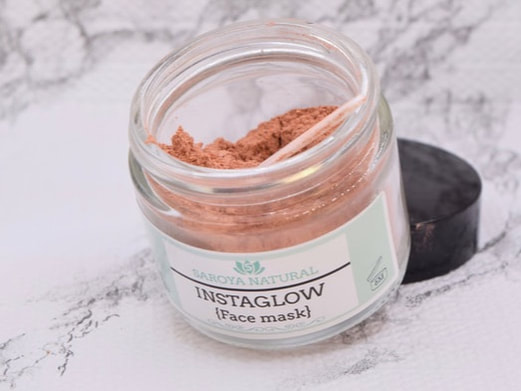|
We all love facials - the ritual of steaming, masking, pore cleansing, facial massage. Blackhead removal - not so pleasant. I'd love to hear what you like about getting a facial! Please share.
However, I bet here's something you didn't know. If you are dark skinned, blackhead removal can actually do more damage to your skin. Why? The curse of pigmented skin is its very easy tendency to scar. Squeezing out blackheads bruises skin and tends to leave behind scars that last forever. Remember that next time someone tries to de-blackhead you! So what can you do? First we need to understand blackheads. Blackheads are caused by two things: excess sebum (oil) and debris like dead skin cells. When the opening of a hair follicle gets clogged by these two, a comedone (bump) develops. If the bump is above the skin surface, it gets oxidized resulting in a blackhead. If the bump is below the skin's surface, it is a whitehead. If the comedone gets infected by bacteria, it is a pimple. There's a lot of hooey stuff on the internet with no scientific backing about how to manage comedones and acne ranging from "non-comedogenic" products to oil cleansing. If we were to address the root cause of blackheads, we need to control the amount of sebum produced and prevent the accumulation of dead skin cells. How can we do this? Turns out that controlling the sebum production is not easy - it is dependent on hormones which are a bit tricky to manage. We can do something about removing dead skin cells. This is a good review published in a scientific journal about methods to manage acne including alternative therapies. The paper indicates that clay masks are effective in clearing out dead skin due to clay's excellent absorptive and adsorptive properties. This paper also indicates the benefits of using clay masks for mild acne although it was sponsored by a company that makes and sells clay!!! There are different types of clay to use. Examples are Bentonite, kaolin, French Rose, French Green, Fuller's earth (Multani Mitti) ... In general the French clays and Kaolin clay are gentler and less drying. Here's what you need to know about applying a clay mask: 1) Cleanse face first 2) You can use water, yogurt, honey, apple cider vinegar as your liquid medium depending on the type of clay and your skin type. For example, bentonite clay is alkaline and it is best to use an acidic liquid like apple cider vinegar to mix your mask. If you are a Vata type person, honey will be a good choice and not dry out your skin. When in doubt, just use water. 3) Test your skin to sensitivity. If your skin is sensitive, apply a thin layer and leave on for 5-10 mins and wash off. If your skin is not too sensitive, you can leave the mask on for longer. According to Ayurveda, you should not leave the mask on beyond the point that it is just completely dry. 4) Frequency of application - no more than once a week depending on how your skin likes it. Some other helpful tips to manage blackheads: 1) Cleanse your face with a mild Ph balanced cleanser, like this, no more than twice a day - morning and evening. One of the key problems with liquid cleansers are that they are very hard to completely rinse off. It is vitally important to rinse the cleanser off COMPLETELY or the chemicals in the cleanser will clog your pores. A rule of thumb is to wash your face with water 10 times after applying the cleanser. 2) Steam your face to "open" (more technically, clean) your pores once a week. 3) Minimize the number of products you use on your face. Check out our Ayurvedic face mask that is blended with the best skin nourishing botanicals. This product has rave reviews from our customers! Lastly and most importantly - let your confidence make you beautiful, blackheads or not. Don't obsess - just follow these simple hygiene tips, eat sensibly, and live your life!
0 Comments
Leave a Reply. |
|
|
© Saroya Natural 2023 | All rights reserved.
Website designed by Aadi M |
Contact Us |


 RSS Feed
RSS Feed